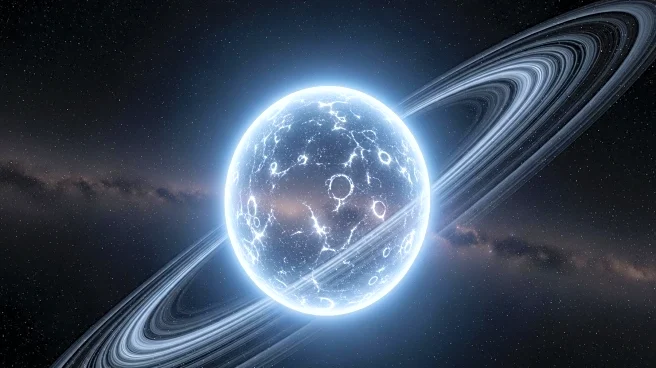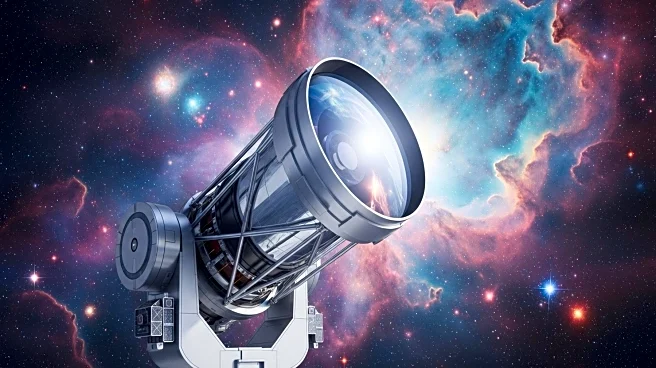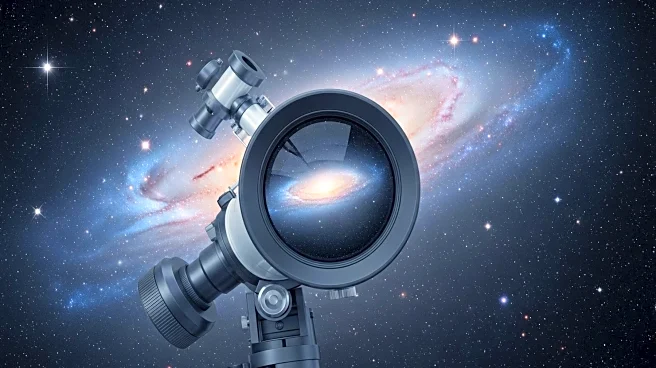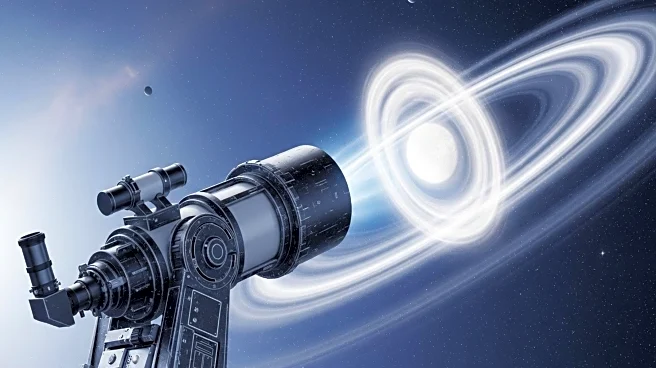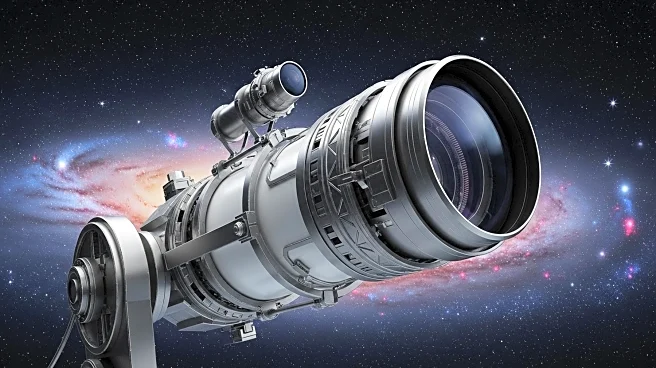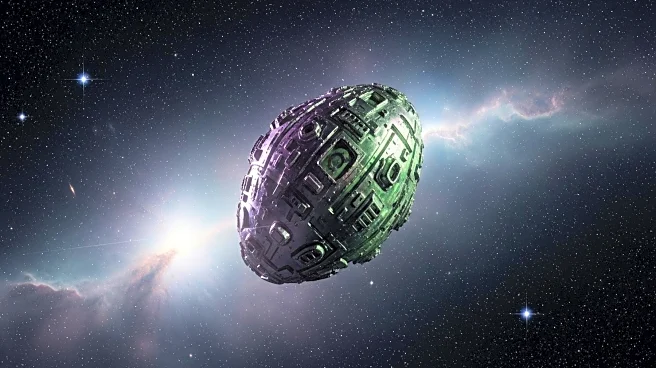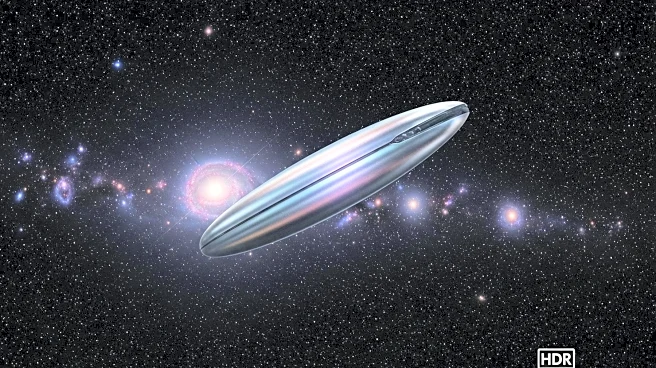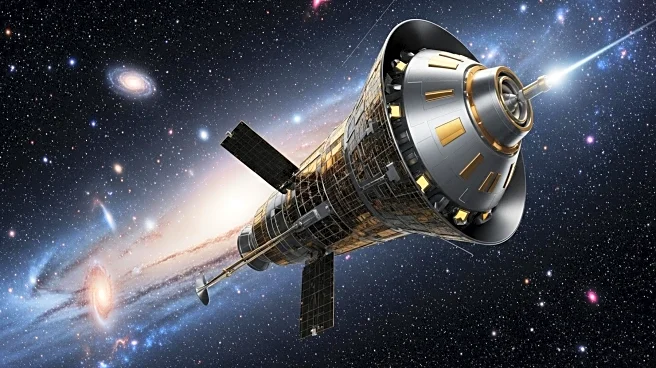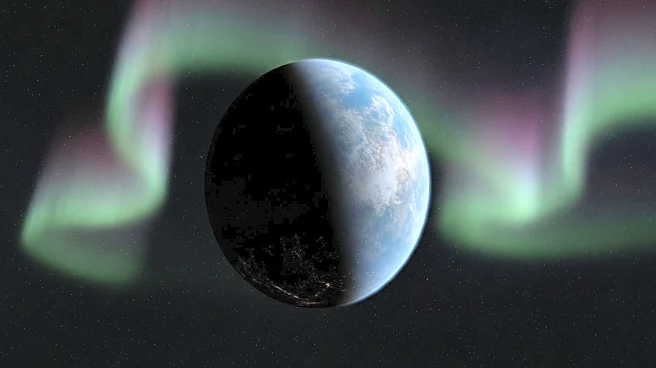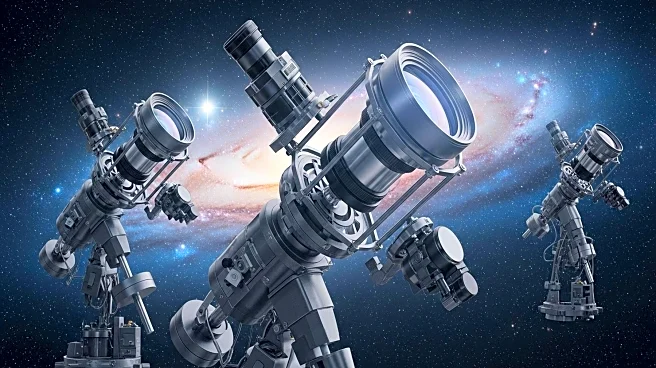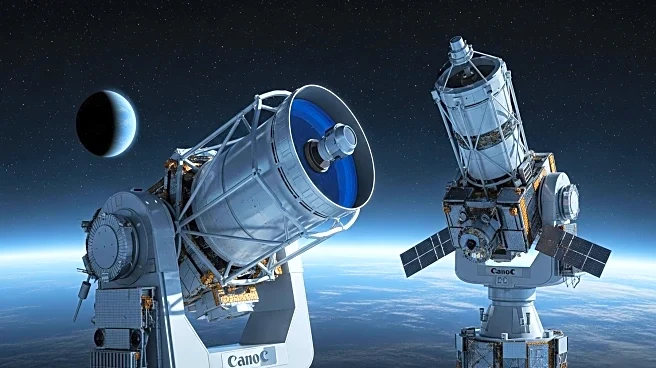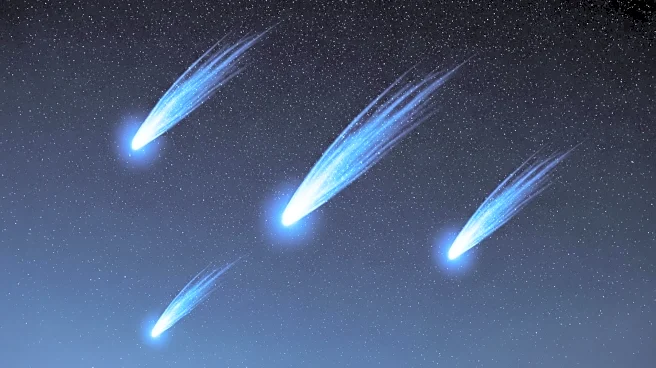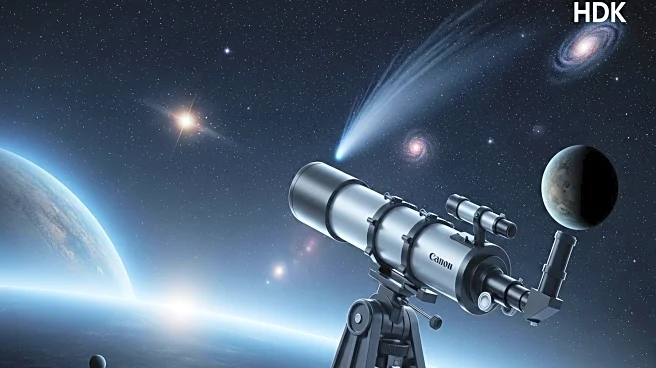What is the story about?
What's Happening?
NASA researchers have successfully captured the first image of a protoplanet, WISPIT 2b, located within a ring-shaped gap in a disk surrounding a young star, WISPIT 2. This discovery was made using the Magellan Telescope in Chile and the Large Binocular Telescope in Arizona. WISPIT 2b, a gas giant approximately five times the mass of Jupiter, is about 5 million years old and situated 437 light-years from Earth. The protoplanet is embedded in a protoplanetary disk, which is composed of gas and dust encircling young stars, serving as the birthplace for new planets. The presence of WISPIT 2b in the ring gap supports the theory that growing planets are responsible for clearing material in these gaps, a process that may have occurred in our own solar system with Jupiter and Saturn.
Why It's Important?
The direct observation of WISPIT 2b in a protoplanetary disk gap provides crucial evidence supporting the hypothesis that planets form and clear material in these gaps. This discovery enhances our understanding of planet formation and the early stages of planetary development. It also offers insights into the processes that shaped our solar system, potentially informing future studies on the formation of planets like Jupiter and Saturn. The ability to capture images of protoplanets using advanced technology like the MagAO-X extreme adaptive optics system represents a significant advancement in astronomical research, allowing scientists to study the characteristics and behaviors of young planets in detail.
What's Next?
Following the discovery of WISPIT 2b, researchers plan to investigate a second candidate planet identified in another ring gap closer to the star WISPIT 2. This ongoing research will further explore the dynamics of protoplanetary disks and the formation of planets within them. The findings may lead to new theories and models regarding planetary formation and migration. Continued observations using advanced imaging technologies will likely provide more detailed data on the composition and development of protoplanets, contributing to a deeper understanding of the universe's evolutionary processes.
Beyond the Headlines
The discovery of WISPIT 2b not only advances scientific knowledge but also raises questions about the ethical and philosophical implications of exploring distant worlds. As technology enables us to observe and potentially interact with celestial bodies, considerations about the impact of human activities on these environments become relevant. The study of protoplanets may also influence cultural perceptions of our place in the universe, inspiring curiosity and a sense of connection to the cosmos.
AI Generated Content
Do you find this article useful?
